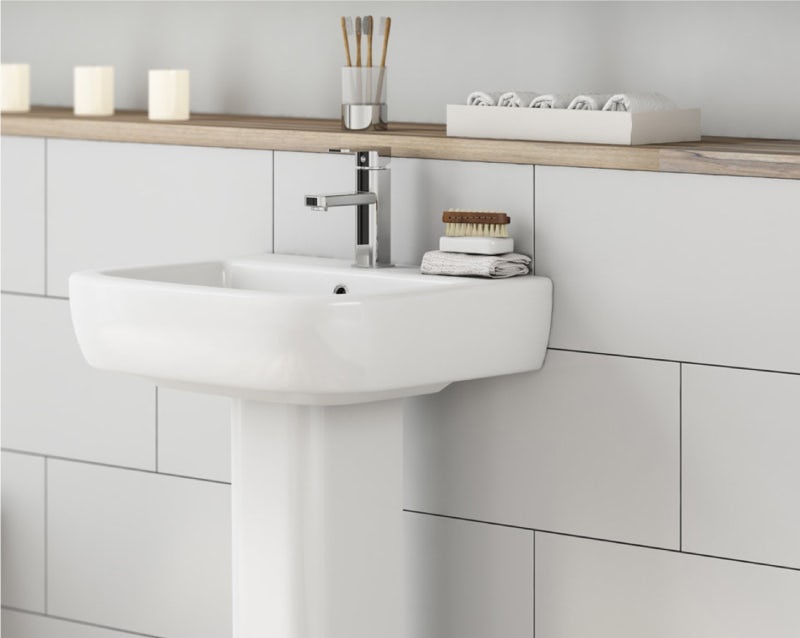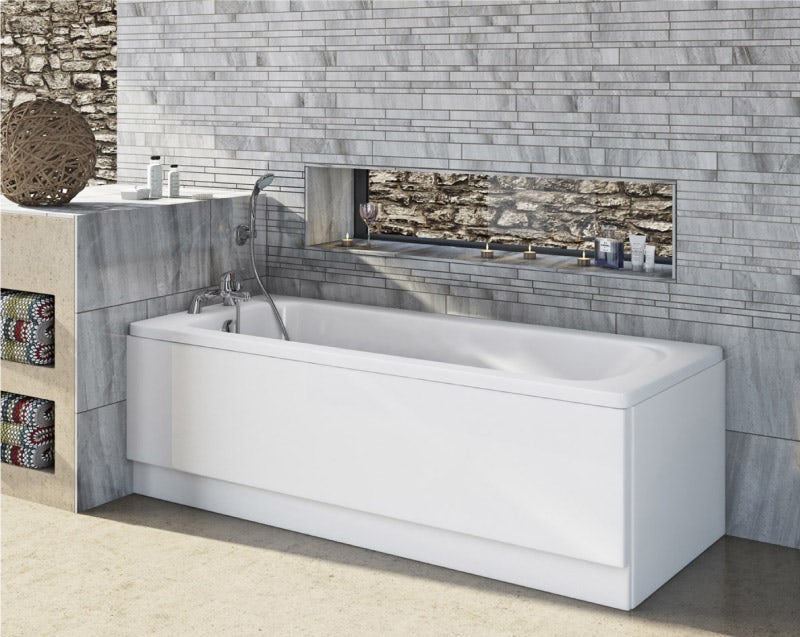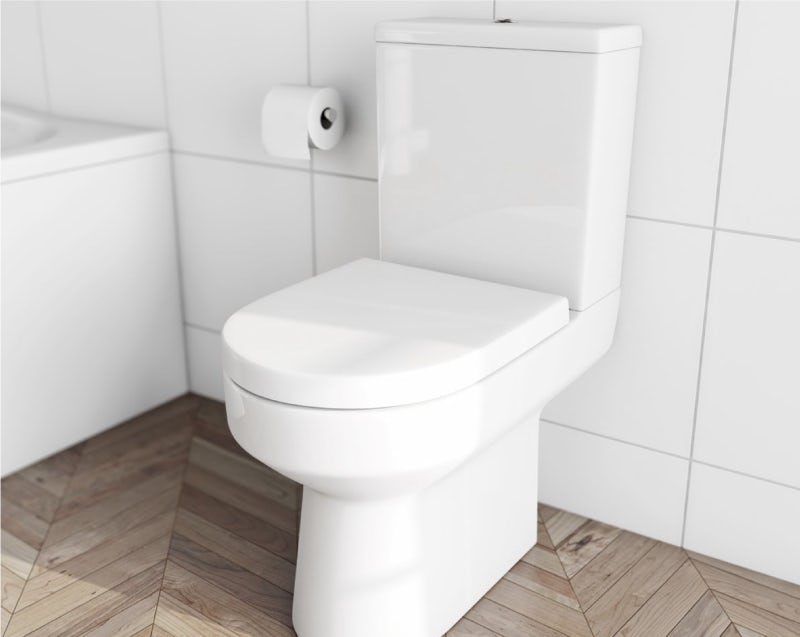Buying a whole new bathroom is certainly exciting, although it will mean dismantling your old bathroom too. In this article, we’ll give you a few handy hints on where to begin and how to dispose of your waste.
Whilst we would recommend hiring an experienced bathroom fitter to cover all aspects of both installation and uninstallation, if you are competent at DIY and you may be able to save on cash by dismantling your old bathroom yourself.
Here are a few tips to help you strip out your bathroom.
Stripping out the old
If you’re replacing any item in your bathroom with a similar fitting, some of the pipework may need to be carefully dismantled for reconnection, but if you are completely rearranging your bathroom, you may as well just cut back your pipework. You can then fix the plumbing to match your new bathroom design.
Remember to turn off the water supply and drain all pipework before you attempt to remove anything.
Basins
Basins come in a variety of designs. They may be supported on large, screw-fixed brackets, set into countertops, or attached to a pedestal; while the pipework may be easily accessible, concealed within a wall, or hidden in a cupboard or behind the pedestal. If you want to reuse the existing pipework, undo the compression nuts on the tap connectors with a wrench or cranked spanner. Disconnect the trap waste, then undo and remove any fixings and wall brackets with a screwdriver or spanner.
Be careful when removing your basin, especially if you wish to reuse the existing pipework
Handy hint: If you're going to reuse connectors or old pipework, block the ends off with insulating tape or something similar, to prevent any debris dropping into the pipework and causing blockages later on.
Baths
Cut through the supply pipes and overflow, and if the bath has adjustable feet, wind them down. Use a craft knife to cut through the mastic seal around the bath. With many baths, you can just lean down on the bath and pull it away from the wall, but if there is a timber framework built around it to hold a panel, you'll have to dismantle this first. Acrylic and steel baths are relatively light, so they can be removed in one piece.
You should be able to remove your acrylic or steel bath in one piece
A cast iron bath can be a tremendous weight. Unless you wish to restore the bath, it may be a lot easier to break it into manageable pieces using a sledgehammer. This will be noisy, and dangerous because of flying debris, so wear ear protectors, safety glasses and gloves to complete the job safely. And don't forget to warn your neighbours before you start.
Toilets
Flush the toilet after you've turned off the water supply, to empty the cistern, then check it isn't refilling. Using a wrench, disconnect the supply and overflow pipes. Undo the fixings for the cistern. The pan is normally stuck or fixed with brass screws to the floor. Brass is a soft material, so be careful when removing them.
If the pan waste is connected to the soil pipe with a flexible push-fit pan connector, you can simply pull the pan free. If the pan is sealed with putty or, even worse, a sand and cement mix, this will have to be removed without damaging the cast-iron soil pipe collar, by carefully breaking out the pan at the outlet with a hammer. Block up the soil pipe to prevent any debris falling in and clogging the pipe; do this by stuffing in a plastic bag filled with old rags and tied to a length of string for easy removal. Break out the remaining pieces and jointing of the old pan using a hammer and sharp cold chisel.
A toilet with a flexible push-fit pan connector should be easy to remove
If you're unfortunate and break some of your soil pipe collar, this can be rectified by cutting off the damaged section using a grinder (available on hire). Make a series of horizontal cuts followed by a vertical cut until you have a clean, straight spigot end. You can then connect the new pan using a push-fit flexible pan connector.
Disposing of waste
Many people choose to hire a skip, especially when dismantling a bathroom, due to all the bulky items that require disposal. However, skips can often be cumbersome, taking up much-needed parking space on a road or driveway and you also run the risk of other people dumping their own rubbish in it! They are often time-limited and delays in your bathroom project can mean additional skip hire costs.
One great alternative to skips is Hippobag waste bags. Available in a range of sizes to match your waste disposal needs, Hippobag arrives flat-packed, so it can be stored neatly until you need to use it.
Once you have filled your Hippobag, simply visit Hippowaste.co.uk or call 0333 999 0 999 to book your collection. This can usually be done within 3 days. The great thing is, you can keep hold of your Hippobag for up to 6 months before having to book your collection. It's waste management on your own terms.
Hippobag waste bags come in the following 3 sizes:
- Hippobag Midi bag 900mm x 900mm x 900mm (0.9m x 0.9mm x 0.9m)—Takes up to 1 tonne in weight and can easily accomodate a large armchair. Great for smaller bathroom refurbs.
- Hippobag Mega bag 700mm x 900mm x 1800mm (0.7m x 0.9m x 1.8m)—Takes up to 1.5 tonnes in weight, perfect for a whole bathroom renovation. Can fit a bath.
- Hippobag Hipposkip 1000mm x 1650mm x 2100mm (1m x 1.65m x 2.1m)—Takes up to 1.5 tonnes in weight, ideal for full bathroom or kitchen replacements. Great for large, bulky items and heavy waste.
If you’re dismantling your bathroom, we'd recommend adding Hippobag waste bags for all your disposal needs.
Disposing of single items and upcycling ideas
If you’re looking to dispose a single bathroom item, like a vanity unit, toilet or basin, this can be easily done at your local council waste and recycling centre. Simply type your postcode into the government website to find out what services your local council offer.
Of course, if your items are still in reasonable condition, you could choose to “upcycle” them. In a world where we’re all now more aware of the amount of waste we produce, upcycling is the act of reusing old or unwanted items, giving them new purpose.
There are plenty of ways you can upcycle bathroom products and we’ve come up with several ideas to inspire you:
- Turn an old vanity unit into a storage cabinet for a shed or garage
- Use wood from vanity units to create an insect hotel in your garden or create new shelving space
- Paint a toilet seat (cleaned, of course!) and use as a new frame for an old mirror
- Decorate a toilet pan or basin and use as a plant pot in your garden
- Fit a cushion to an old toilet for handy outdoor seating
- Create a shallow pond, bird feeding table or mini salad garden using your old shower tray
Why not follow us on Pinterest for more creative ideas?
Once you've dismantled your old bathroom
Now that everything's been removed and all your waste has been disposed of, you're ready to start adding all the elements that will make your new bathroom complete. Check out our bathroom planning advice to work out what your next steps will be.









